
The league often is referred to as the winter league because many Major League Baseball (MLB) players spend their off-seasons there developing their skills.
Puerto Rico takes great pride in its baseball tradition. That pride is visible in the support from fans. It also can be seen in the enthusiasm and camaraderie of the players who are selected to represent Puerto Rico in international competition, such as in the World Baseball Classic that is played every four years. Puerto Rico has produced many Major League players including Hall of Famers Orlando Cepeda, Roberto Alomar, and Iván Rodríguez. Yet the greatest baseball player to hail from the small Caribbean island is Roberto Clemente. He has become known as the "Babe Ruth" of Puerto Rico. Roberto Clemente e rto Walker was born in 1934, in Carolina, Puerto Rico. He was the youngest of seven children in a family without a lot of means. He grew up working alongside his brothers and father, harvesting sugar cane and loading it into trucks.
At a young age, Roberto showed great athletic talent. By the time he was 17 years old, he was a member of the Santurce Crabbers team in the Puerto Rican Baseball League.
DID YOU KNOW?
Hiram Bithorn and Luis Olmo were the first two baseball players from Puerto Rico to play in the Major Leagues. Bithorn, a pitcher, played his first game for the Chicago Cubs in 1942. He played for four seasons.
Olmo, an outfielder, played his first game for the Brooklyn Dodgers in 1943. He played for six seasons, ending his career with the Boston Braves.
This story is from the March 2023 edition of Cobblestone American History Magazine for Kids.
Start your 7-day Magzter GOLD free trial to access thousands of curated premium stories, and 9,000+ magazines and newspapers.
Already a subscriber ? Sign In
This story is from the March 2023 edition of Cobblestone American History Magazine for Kids.
Start your 7-day Magzter GOLD free trial to access thousands of curated premium stories, and 9,000+ magazines and newspapers.
Already a subscriber? Sign In
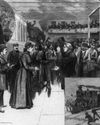
nellie Bly Journalist
nellie Bly's first newspaper articles appeared in print when she was just 20 years old.

Arabella Mansfield -Lawyer
Arabella Mansfield started out life as Belle Babb (1846-1911). She grew up in a Midwest family that valued education. In 1850, her father left to search for gold in California. He died in a tunnel accident a few years later.
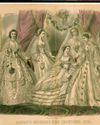
Sarah Josepha Hale Editor
Long before Vogue or Glamour caught women's attention, Godey's Lady's Book introduced the latest fashions.

Louise Blanchard Bethune - Architect
Louise Blanchard Bethune (1856-1915) showed early promise in math. Lucky for her, her father was the principal and a mathematics teacher in a school in Waterloo, New York. Instead of going to school, Louise's father taught her at home until she was 11 years old. She also discovered a skill for planning houses. It developed into a lifelong interest in architecture and a place in history as the first professional female architect in the United States.
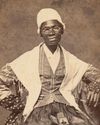
Sojourner Truth Speaker
There was a time when slavery wastes abolished the institution over a number of decades. New York abolished slavery in 1827. Isabella Baumfree (c. 1797-1883) was born enslaved in Hurley, New York. When she was nine, she was taken from her parents and sold. She then was sold several more times. Some of her owners were cruel and abused her. During that time, she had several children.
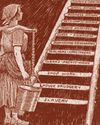
Getting Started
In this editorial cartoon, a young 19th-century woman must overcome the obstacle of carrying a heavy burden while climbing a multirung ladder before she can achieve \"Equal Suffrage.\"
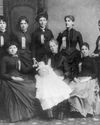
Leonora M. Barry - Investigator
When Leonora M. Barry (1849-1923) was a young girl, her family left Ireland to escape a famine. They settled in New York. Barry became a teacher. In 1872, she married a fellow Irish immigrant. At that time, married women were not allowed to work. So, Barry stayed home to raise their three children.

Finding a New Path
For many Americans, this month's mystery hero represents the ultimate modern trailblazer. She is recognized by just her first name.
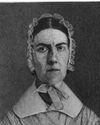
The Grimké Sisters Abolitionists
Every night, Dinah was supposed to brush the E hair of her mistress, Sarah Moore Grimké (1792-1873). But one night, 12-year-old Sarah stopped Dinah. She wanted to help Dinah instead. They had to be quiet so they wouldn't get caught. It was 1804 in Charleston, South Carolina. The Grimkés were among Charleston's major slaveholding families. Strict laws regulated the behavior of both master and enslaved people.
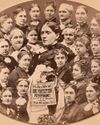
Frances Willard Leader
During Frances Willard's lifetime (1839-1898), she was the best-known woman in America: She headed the largest women's organization in the worldthe Woman's Christian Temperance Union (WCTU). In that role, her abilities shone as a social activist, a dynamic speaker, and a brilliant organizer. She educated women on how to run meetings, write petitions, give speeches, and lobby state and federal legislators.
